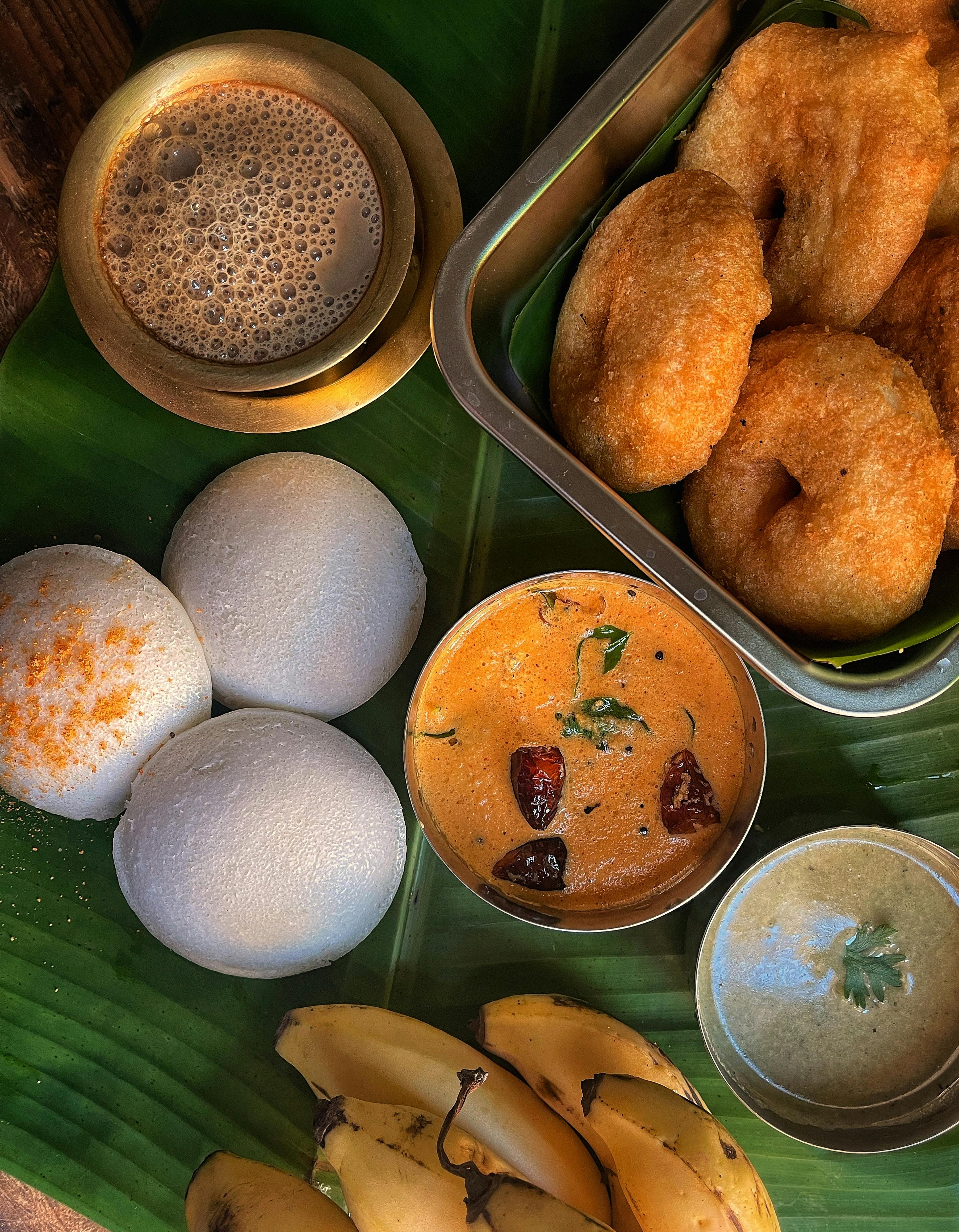
A Journey Through South Indian Cuisine: Beyond Dosas and Idlis
When many Americans think of Indian food, their minds often jump to butter chicken, naan bread, and samosas—all delicious staples of North Indian cuisine that have become familiar favorites. But there’s another world of Indian culinary traditions waiting to be explored: the vibrant, diverse, and deeply flavorful cuisine of South India. From paper-thin dosas to cloud-like idlis, from complex sambars to coconut-infused curries, South Indian food offers a fascinating contrast to its northern counterpart—lighter yet intensely flavored, often vegetarian but never boring, and built on cooking techniques that have been perfected over millennia.
The Cultural and Geographical Canvas of South Indian Cuisine
South Indian cuisine isn’t a monolith but rather a collection of distinct regional culinary traditions shaped by geography, history, and culture. To understand the food, we must first understand the land and its people.
The Geographic Foundation
South India encompasses four major states—Tamil Nadu, Kerala, Karnataka, and Andhra Pradesh (including the newer state of Telangana)—each with its own culinary identity. Unlike the wheat-growing plains of the north, South India’s landscape features:
- Coastal regions: The long coastlines of Kerala, Tamil Nadu, and Andhra Pradesh have led to seafood-rich cuisines and the abundant use of coconut
- Western Ghats: These mountains create distinct climate zones and are home to many of the spices that made India famous, particularly black pepper, cardamom, and cinnamon
- Rice-growing plains: The fertile river deltas of the Krishna, Godavari, and Kaveri rivers have made rice the staple grain throughout the region
This geography has directly influenced what grows and what’s eaten. The tropical climate supports coconut palms, tamarind trees, and a variety of fruits and vegetables that feature prominently in the cuisine. The abundance of rice has made it the foundation of the diet, appearing not just as steamed grains but transformed through fermentation and grinding into dozens of different preparations.
Cultural Influences
South Indian cuisine has been shaped by several key cultural factors:
- Ancient heritage: Many South Indian culinary traditions date back thousands of years, with references to dishes similar to modern idli and dosa appearing in texts from the first millennium CE
- Religious practices: The strong influence of Hinduism, particularly vegetarian Brahminical traditions, has contributed to the predominantly vegetarian nature of much South Indian cuisine
- Trade connections: South India’s ancient maritime trade with the Middle East, Southeast Asia, and even Rome introduced new ingredients and techniques
- Minimal Mughal influence: Unlike North India, much of South India remained outside direct Mughal control, resulting in fewer Persian and Central Asian influences in the cuisine
The Art of Fermentation in South Indian Cooking
One of the most distinctive aspects of South Indian cuisine is its sophisticated use of fermentation—a technique that transforms humble ingredients into nutritional powerhouses with complex flavors and textures.
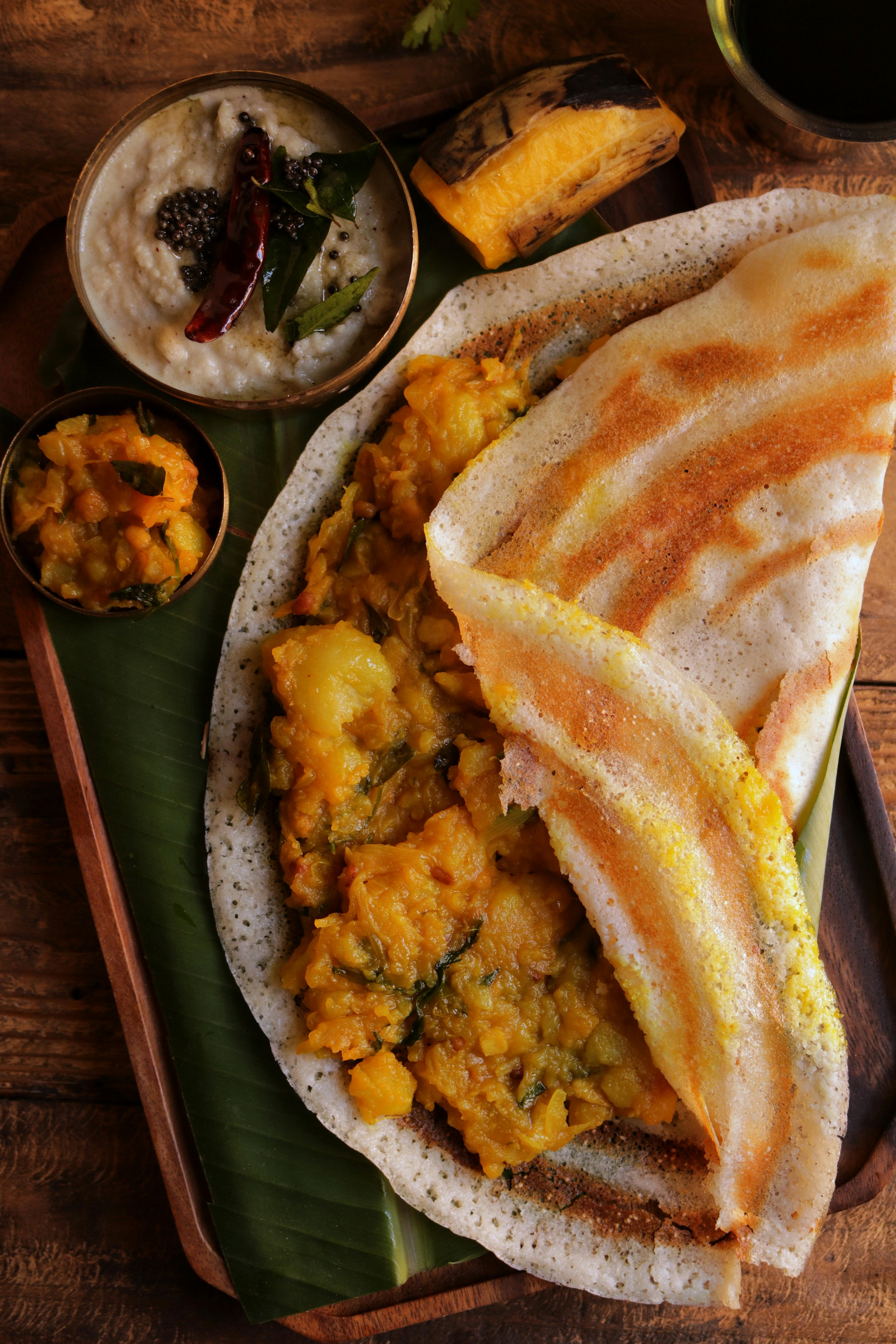
The Science Behind South Indian Fermentation
Long before the science of microbiology was understood, South Indian cooks had perfected the art of controlled fermentation:
- Wild fermentation: Traditional South Indian fermentation relies on naturally occurring yeasts and bacteria in the environment
- Temperature sensitivity: The warm South Indian climate creates ideal conditions for fermentation, with techniques adapted to work with seasonal variations
- Nutritional enhancement: Fermentation increases the bioavailability of nutrients, particularly B vitamins and proteins, and creates beneficial probiotics
- Flavor development: The slight sourness that develops during fermentation adds complexity and depth to dishes
Key Fermented Preparations
Several iconic South Indian foods rely on fermentation:
- Dosa batter: A mixture of rice and urad dal (black gram) soaked, ground, and fermented for 8-24 hours, creating a slightly sour batter that, when cooked, yields crispy, tangy crepes
- Idli batter: Similar to dosa batter but with different proportions, resulting in a fluffier mixture that’s steamed to create soft, spongy cakes
- Appam batter: Rice batter fermented with coconut milk and sometimes a small amount of toddy (palm wine) for leavening, creating bowl-shaped pancakes with crisp edges and soft centers
- Uttapam batter: Essentially a thicker dosa batter, cooked into pancake-like discs often topped with vegetables
The fermentation process typically takes 8-24 hours, depending on climate conditions, and requires careful attention to temperature, water quality, and ingredient proportions. The result is worth the wait: foods that are not only delicious but also more digestible and nutritious than their unfermented counterparts.
The Cultural Significance of Fermentation
Beyond its culinary and nutritional benefits, fermentation in South Indian cooking carries cultural significance:
- Tradition and ritual: The process of preparing fermented batters has been passed down through generations, often accompanied by specific practices and beliefs
- Community and sharing: In traditional settings, fermentation knowledge was communal, with starters sometimes shared between households
- Sustainability: Fermentation serves as a natural preservation method in a tropical climate, reducing food waste
This ancient practice of fermentation represents one of South Indian cuisine’s most significant contributions to world culinary heritage—a sophisticated understanding of microbial processes developed millennia before modern science could explain them.
These cultural factors have created a cuisine that is distinctly different from North Indian traditions, with its own techniques, flavor profiles, and dining customs.
Rice and Lentils: The Foundation of South Indian Cuisine
If fermentation is the technique that defines South Indian cooking, rice and lentils are its foundational ingredients—the canvas upon which the cuisine’s vibrant flavors are painted.
The Centrality of Rice
Rice is more than just a side dish in South India; it’s the cornerstone of the cuisine:
- Varieties: Numerous rice varieties are cultivated, from short-grain varieties ideal for steaming to medium-grain types perfect for dosas
- Cultural significance: Rice is considered auspicious and features in religious ceremonies and life celebrations
- Versatility: Beyond being steamed and eaten with curries, rice is transformed into dozens of different preparations:
- Ground into batters for dosas, idlis, and uttapams
- Formed into noodles (sevai) and dumplings (kozhukattai)
- Made into porridges (kanji) and desserts (payasam)
- Flattened into flakes (aval) or puffed for snacks
The Essential Role of Lentils
Complementing rice in South Indian cuisine are various lentils and pulses:
- Urad dal (black gram): Essential for fermented preparations like dosa and idli batters
- Toor dal (pigeon peas): The primary ingredient in sambar, the quintessential South Indian lentil soup
- Chana dal (split chickpeas): Used in various preparations and as a thickening agent
- Moong dal (mung beans): Featured in lighter preparations and porridges
These lentils provide protein in a largely vegetarian cuisine and contribute distinctive textures and flavors to dishes.
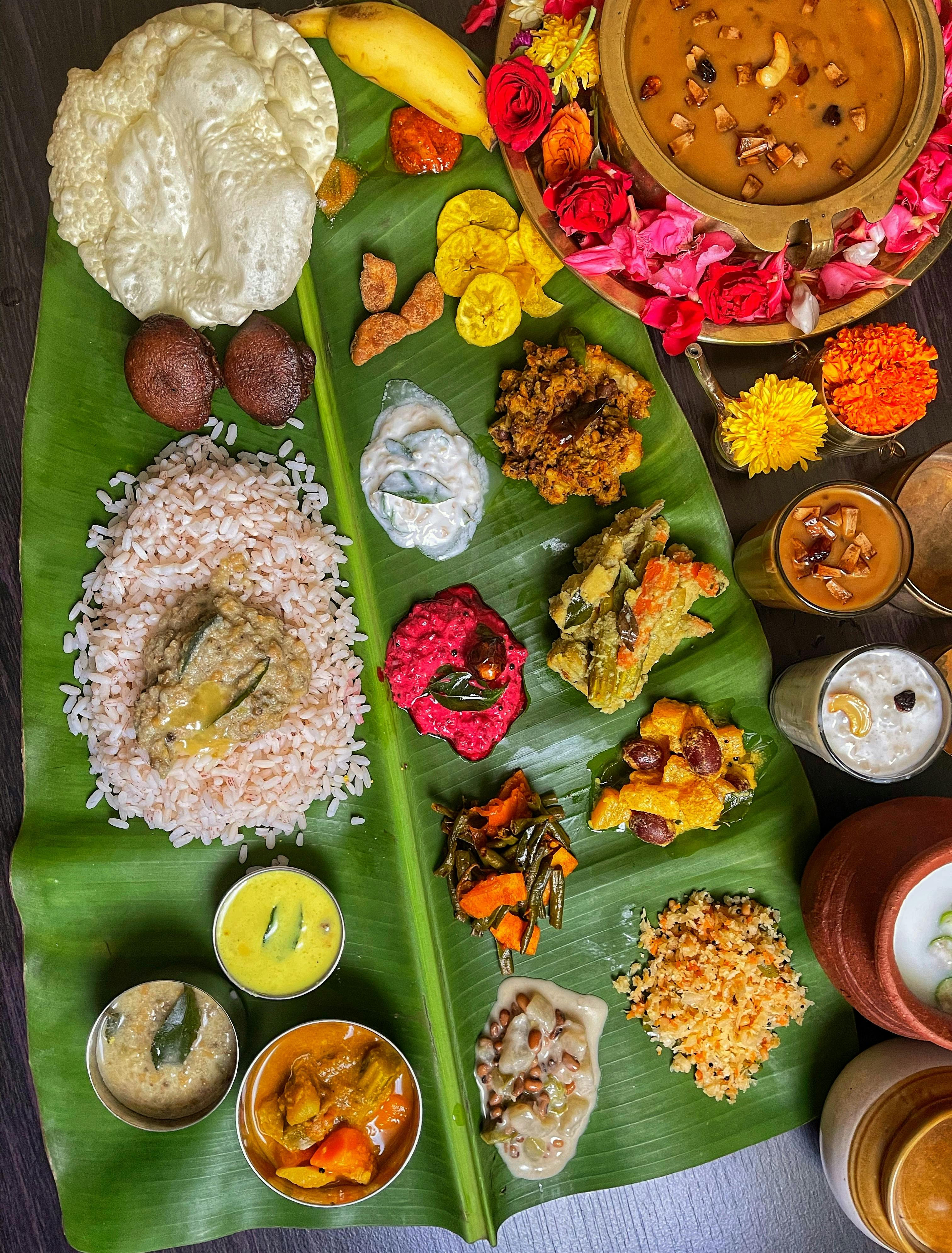
The Magic of Rice and Lentil Combinations
What makes South Indian cuisine particularly ingenious is how it combines rice and lentils to create nutritionally complete meals:
- Complementary proteins: Rice and lentils together provide all essential amino acids, creating complete proteins without animal products
- Textural contrasts: The starchiness of rice balances the density of lentils, creating satisfying mouthfeel
- Flavor foundations: These relatively neutral bases allow the complex spice mixtures and tangy accompaniments to shine
This rice-lentil partnership is perhaps most perfectly exemplified in the classic South Indian meal structure: a central portion of rice surrounded by various lentil-based preparations like sambar and rasam, creating a meal that is nutritionally balanced, texturally varied, and explosively flavorful.
Coconut: The Soul of South Indian Flavor Profiles
If rice and lentils form the foundation of South Indian cuisine, coconut provides its soul—the ingredient that gives many South Indian dishes their distinctive character and sets them apart from other regional Indian cuisines.
Coconut’s Culinary Versatility
Every part of the coconut finds its way into South Indian cooking:
- Fresh grated coconut: Added to chutneys, vegetable dishes, and used as garnish
- Coconut milk: The base for curries, particularly in Kerala cuisine
- Coconut oil: The traditional cooking medium in Kerala and coastal regions, imparting a distinctive aroma
- Coconut cream: Used in richer preparations and some desserts
- Roasted coconut: Provides depth and nuttiness to spice blends and masalas
Regional Coconut Tip
When dining at South Indian restaurants, you can often identify the regional origin of a dish by how coconut is used. Kerala dishes typically feature coconut oil and coconut milk, while Tamil dishes more commonly use grated coconut in chutneys and as garnish.
Regional Variations in Coconut Usage
While coconut is important throughout South India, its use varies by region:
- Kerala: The most coconut-centric cuisine, with coconut appearing in nearly every dish, from the famous stew (ishtu) to fish curries
- Coastal Tamil Nadu: Abundant coconut in chutneys and gravies, particularly in Chettinad cuisine
- Coastal Karnataka: Coconut-based gravies for seafood dishes and the distinctive Mangalorean cuisine
- Inland regions: More moderate use of coconut, often as a garnish or in specific dishes rather than as a universal ingredient
Coconut’s Flavor Contribution
Coconut does more than just add its own flavor to South Indian dishes:
- Balancing heat: The sweetness and fat content of coconut tempers the heat of chilies
- Texture enhancement: Coconut adds creaminess to chutneys and gravies without dairy
- Flavor carrier: Coconut’s mild flavor absorbs and carries other spices, creating complex taste profiles
- Cooling properties: In Ayurvedic terms, coconut is considered cooling, balancing the warming properties of many spices
The omnipresence of coconut in South Indian cuisine reflects both practical considerations—the abundance of coconut palms in the region—and culinary wisdom about how its flavor and properties complement other local ingredients.
Signature Dishes: The Stars of South Indian Cuisine
South Indian cuisine boasts a remarkable array of distinctive dishes, each showcasing the region’s unique ingredients and techniques.
Breakfast and Snack Specialties
Some of South India’s most beloved contributions to world cuisine are its breakfast and snack items:
- Dosa: A thin, crispy crepe made from fermented rice and lentil batter, often served with sambar and chutney. Variations include:
- Masala Dosa: Filled with spiced potatoes
- Paper Dosa: Extra thin and crispy
- Rava Dosa: Made with semolina for a lacy texture
- Neer Dosa: A soft, delicate rice crepe from Karnataka
- Idli: Steamed cakes made from fermented rice and lentil batter, mild in flavor and perfect for soaking up sambar and chutney
- Vada: Savory, donut-shaped fritters made from lentil batter, crispy outside and soft inside
- Uttapam: Thicker pancakes made from the same batter as dosa, often topped with onions, tomatoes, and chilies
- Appam: Bowl-shaped rice pancakes with crisp edges and a soft center, popular in Kerala
Main Course Specialties
Beyond the famous breakfast items, South Indian main courses include:
- Sambar: A tangy, spiced lentil and vegetable stew flavored with tamarind and a special spice blend called sambar powder
- Rasam: A thin, spicy, and sour soup made with tamarind, tomatoes, and pepper, often served over rice or as a digestive drink
- Kerala Fish Curry: Fish cooked in a rich gravy of coconut milk, tamarind, and distinctive “Kudampuli” (Malabar tamarind)
- Chettinad Curry: Intensely spiced preparations from the Chettinad region of Tamil Nadu, known for complex spice blends
- Avial: Mixed vegetables in a coconut and yogurt sauce, seasoned with curry leaves and coconut oil
Accompaniments and Condiments
South Indian meals are incomplete without their distinctive accompaniments:
- Coconut Chutney: Freshly ground coconut with green chilies, ginger, and tempering of mustard seeds and curry leaves
- Tomato Chutney: Tangy, spicy accompaniment made with tomatoes, chilies, and tamarind
- Podi: Dry spice powders (often called “gunpowder”) mixed with oil and served alongside rice or dosa
- Pachadi: Yogurt-based side dishes similar to raita but with distinctive South Indian spicing
Experiencing South Indian Cuisine in America
As American diners become more adventurous and knowledgeable about regional Indian cuisines, South Indian restaurants have grown in popularity across the country.
Finding Authentic South Indian Restaurants
To experience genuine South Indian flavors in America, look for these indicators of authenticity:
- Regional specialization: Restaurants that focus specifically on South Indian cuisine rather than offering a pan-Indian menu
- Vegetarian focus: While not exclusively vegetarian, authentic South Indian restaurants typically offer a wide range of vegetarian options
- Dosa varieties: A diverse selection of dosas beyond just the basic masala dosa
- Thali options: The traditional South Indian meal format with multiple small dishes served on a single plate
- Filter coffee: The presence of South Indian filter coffee (made with chicory) on the menu is often a good sign
Dining Tip
When dining at a South Indian restaurant for the first time, consider ordering a thali (if available) to sample multiple dishes in smaller portions. This provides an excellent introduction to the diverse flavors and textures of the cuisine.
Regional South Indian Restaurants in America
Different restaurants may specialize in specific regional traditions:
- Kerala restaurants: Look for appam, stew (ishtu), fish molee, and dishes cooked in coconut milk
- Tamil restaurants: Specialties include Chettinad curries, Madurai-style dosas, and a variety of podis (spice powders)
- Karnataka establishments: Feature bisi bele bath, neer dosa, and Mangalorean seafood preparations
- Andhra restaurants: Known for spicier preparations, distinctive pickles, and specialties like pesarattu (mung bean dosa)
Recommended Entry Points for Newcomers
For those new to South Indian cuisine, these dishes make excellent entry points:
- Masala Dosa: The crispy crepe with spiced potato filling is a universally appealing introduction
- Idli Sambar: Soft steamed cakes with lentil soup—mild, comforting, and nutritious
- Uttapam: The “Indian pizza” with toppings is familiar in concept yet distinctively South Indian
- Chettinad Vegetable Curry: For those who enjoy spice, this flavorful Tamil preparation showcases the complex spicing of the region
- Kerala Avial: Mixed vegetables in coconut sauce offer a gentle introduction to Kerala flavors
Conclusion: A Culinary Tradition Worth Exploring
South Indian cuisine represents one of the world’s most sophisticated culinary traditions, with its ingenious fermentation techniques, balanced nutritional approach, and complex flavor profiles. As it becomes increasingly available in American restaurants, diners have the opportunity to explore beyond the familiar North Indian dishes that have long dominated the Indian food scene in the United States.
What makes South Indian cuisine particularly special is how it transforms humble ingredients—rice, lentils, coconut, and local vegetables—into dishes of remarkable complexity and flavor. The cuisine’s emphasis on vegetarian preparations also makes it particularly relevant in today’s more plant-forward food culture, offering centuries of wisdom on creating satisfying, protein-complete meals without meat.
Whether you’re trying your first dosa, exploring the regional variations of Tamil Nadu or Kerala, or learning to appreciate the subtle differences between various chutneys and podis, South Indian cuisine offers a lifetime of culinary discovery. Its growing presence in American restaurants is not just a trend but a welcome expansion of our collective culinary horizons—an invitation to explore one of the world’s most sophisticated, delicious, and historically rich food traditions.
Related Articles
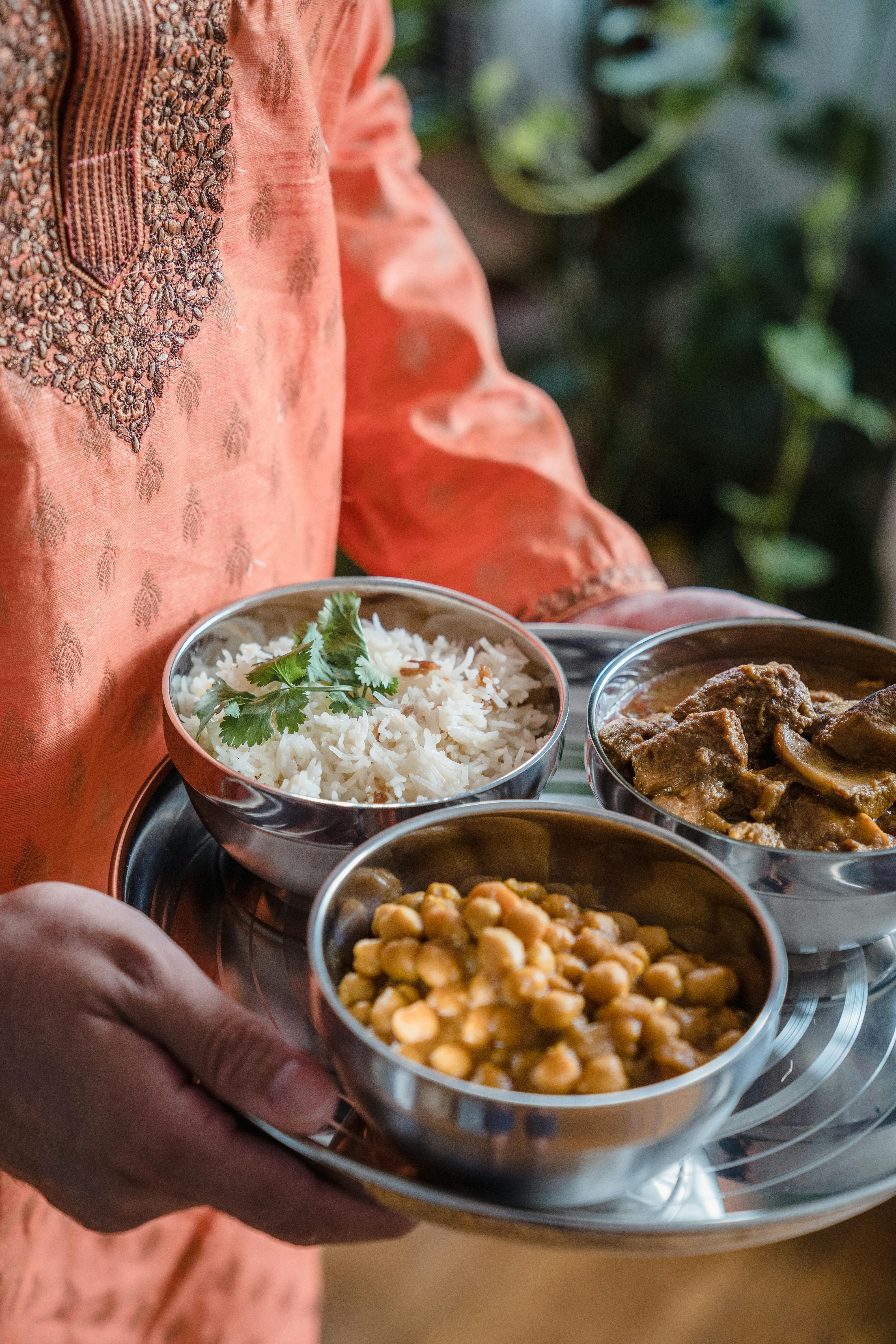
The Royal Heritage of North Indian Cuisine
Trace the Mughal influences, cooking techniques, and cultural significance behind North India's rich...
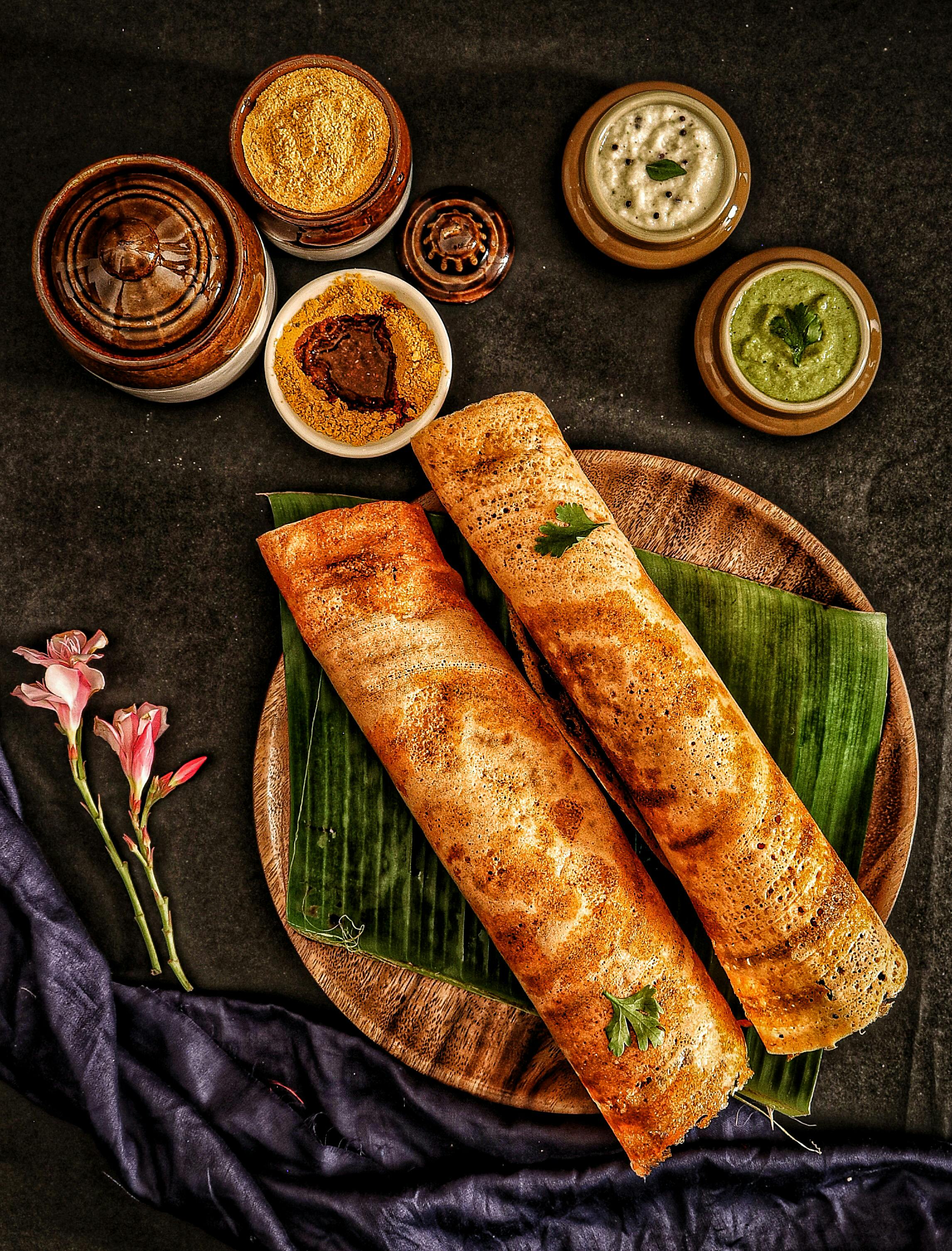
Beyond the Familiar: Lesser-Known Regional Indian Cuisines
Venture beyond butter chicken and tikka masala to discover India's hidden culinary gems from regions...